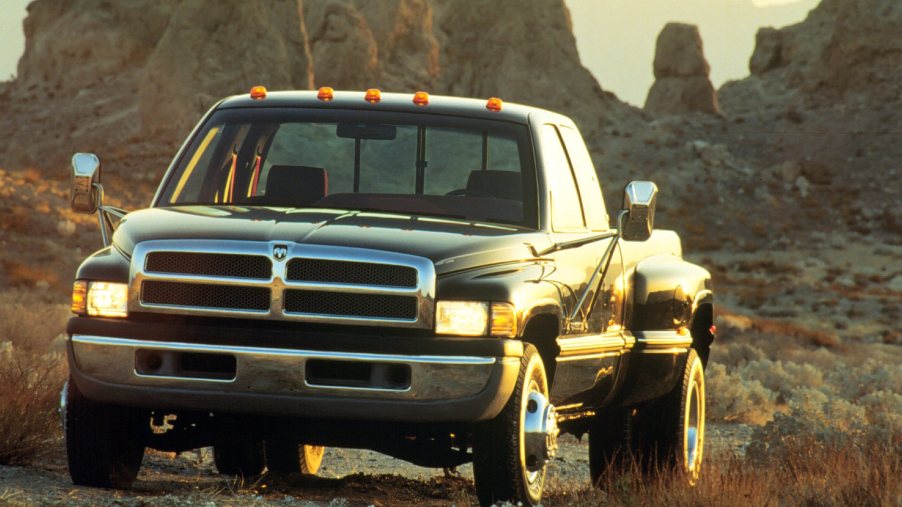
2nd-Gen Dodge Ram Cummins: The Good and Bad
The second-gen Dodge/Ram HD trucks made their first appearance in 1994 and are considered a breakthrough after over 20 years of what essentially was the same Dodge truck. Their retro-Power Wagon styling and interior appointments a step up from the Chevy Silverado and Ford F-Series was icing on the cake. But, understand that the second-gen Dodge/Ram HD trucks still used Cummins’ first-gen diesel engines.
Did Cummins make improvements to the Dodge and Ram engines?
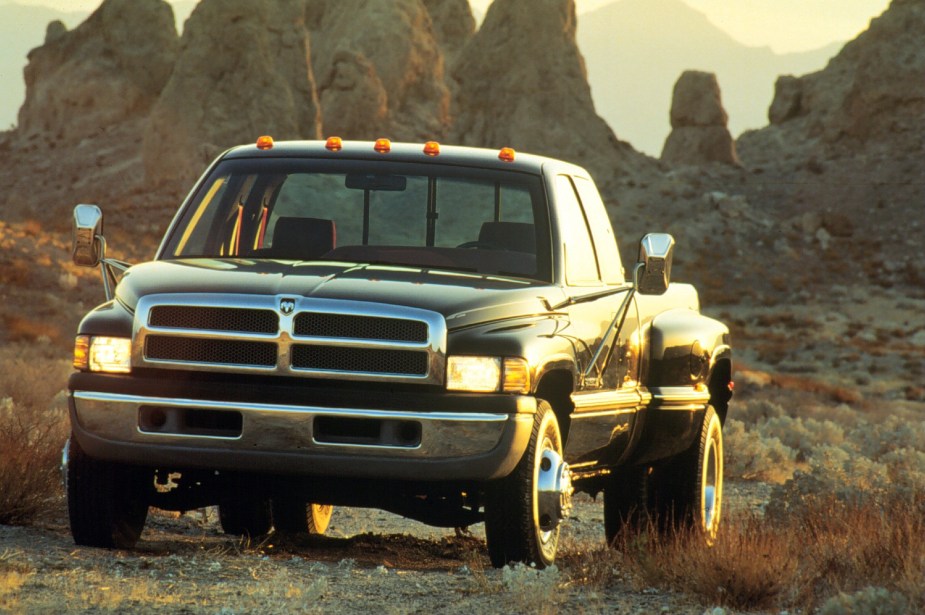
So second-gen applied to the Cummins engine is a misnomer. The 5.9-liter Cummins diesel engine actually appeared in 1989 Dodge trucks and ran through 2002. But within that period, the 5.9 saw two different versions. The earlier version in 1994 to 2002 Dodge/Ram trucks feature mechanical injection but electronic fuel pumps using a Bosch P7100 pump.
These were 12-valve engines, produced from 1994 to early-1998. Then mid-year, a 24-valve version replaced it having an electronic fuel pump from Bosch’s VP44 pump. But the injectors remained mechanical.
Which Cummins diesel is better, the 12- or 24-valve?
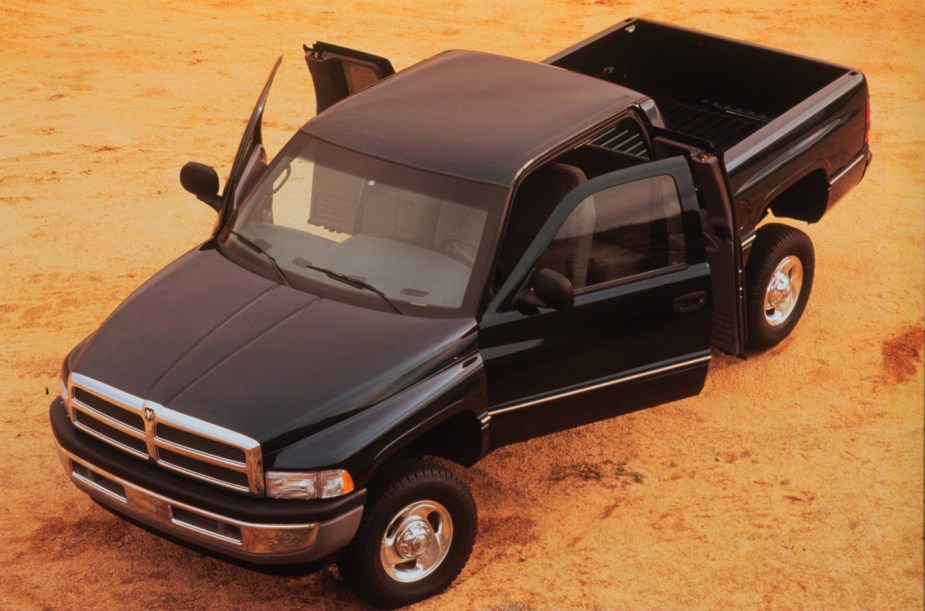
While the 24-valve engine is more advanced, enthusiasts prefer the earlier 12-valve “P-Pump” engines. That’s because they are a simpler design, which means they are easier to modify and take to aftermarket modification well. Increasing fuel flow rewards with more power. But even in stock form, the 5.9 cranked out 160 hp and 400 lb-ft of torque its first two years behind the four-speed manual trans.
A second diesel engine option upped those numbers to 175 hp and 420 lb-ft of torque. Then, for 1996 through 1998 figures, the 5.9 reached 180 hp and 420 lb-ft of torque. Ram also switched to a four-speed manual trans.
Those figures sound pedestrian, but they beat rivals, and for the time are strong numbers. And the later 1994 through 1998 12-valves featured Holset HX35 turbochargers, increasing boost above earlier iterations. Then the second version of the first-gen Cummins appeared in 1999.
How was the 5.9 Cummins improved in 1999?
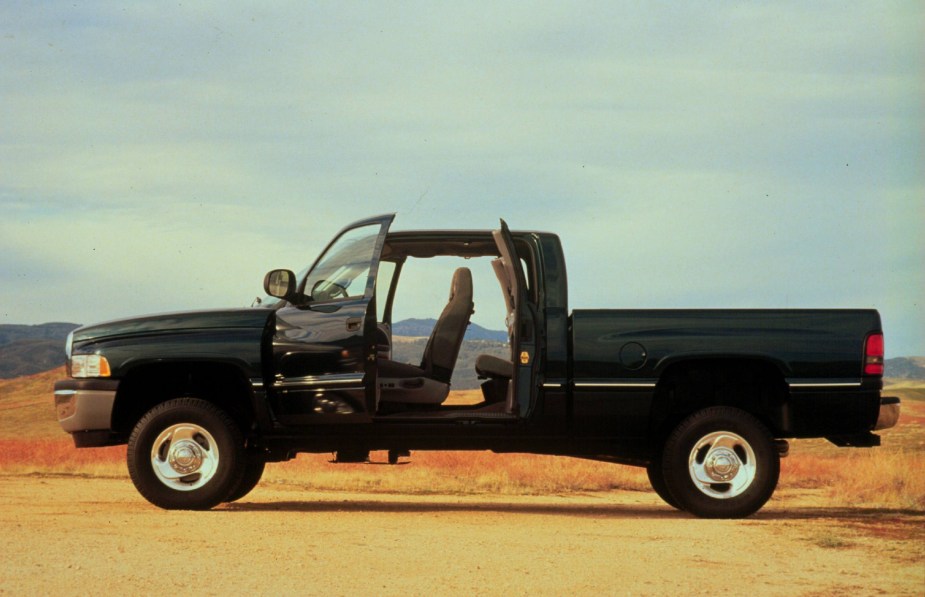
The heads now featured four valves per cylinder. And the injectors, though still mechanical, used an electronic injection pump controlled by an improved ECM. Airflow is vastly improved from the 12-valve. Hooked to the available five-speed manual overdrive transmission, Ram trucks increased performance to 215 hp and 420 lb-ft of torque.
By 2000, that performance increased to 235 hp and 460 lb-ft of torque. Through 2002, these used a five-speed manual transmission. Not to confuse, but for the last two years of Dodge/Ram second-gen production, the company added a High Output 5.9-liter with 245 hp and 505 lb-ft of torque. This is accomplished through higher compression and the new NV5600 six-speed manual transmission.
What to look for
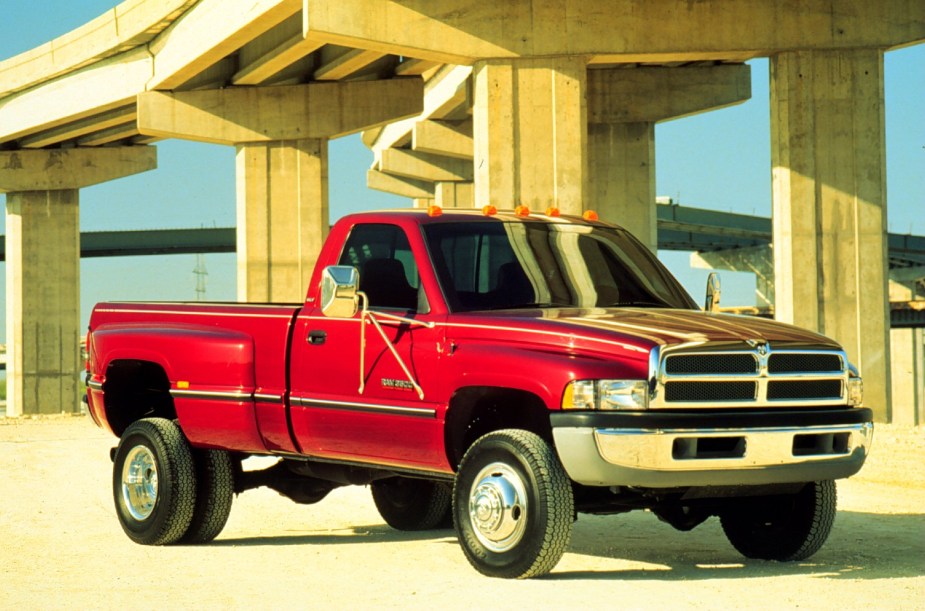
As for the trucks themselves, there were both club and crew-cab versions. There was both a short bed and a long bed. And dual rear wheels were available on 3500 trucks, as was two- and four-wheel drive.
In all, the now classic styling of the second-gen HDs combined with the workhorse 5.9-liter Cummins diesel makes it highly collectible today. Prices are all over the place depending on the condition, mileage, and options the truck came with. Also factored into the price are any modifications.
Mods can include larger injectors and twin turbocharging, along with more costly operations like bigger bores and longer stroke rods. Things to look out for with the later 5.9 engines is the electric Bosch fuel pump. According to Diesel IQ, a better aftermarket version is the best bet or a recent replacement with a new OE pump is good.



